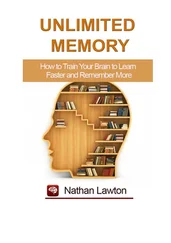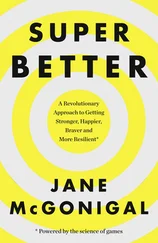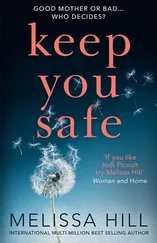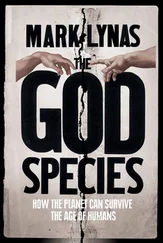“Adaptability” is a term you hear a lot from people who study mass extinction. They talk about it with a weird, gallows-humor kind of optimism. This is evident when you meet Earth scientist Mike Benton, who has spent the past ten years studying the Great Dying and its survivors. In his line of work, Benton has sifted through the remains of some serious planetwide horrors. Two hundred and fifty million years ago, when the Great Dying happened, megavolcanoes fouled the atmosphere with carbon, and it’s possible that an asteroid hit the planet, too. Despite Benton’s intimate familiarity with mass death, he still maintains hope that our species will survive. He told me that “good survival characteristics for any animal” include being able to eat a lot of different things and live anywhere, just as humans can. Of course, he noted, that doesn’t mean there won’t be a lot of casualties. He continued:
Evidence from mass extinctions of the past is that the initial killing is often quite random, and so nothing in particular can protect you, but then in the following grim times, when Earth conditions may still be ghastly, it’s the adaptable forms that breed fast and live at high population size that have the best chance of fighting through.
We have a fighting chance because our population is large, plus we can adapt to new territories and eat a wide range of things. That’s a good start, but what does it really mean to fight through? In part three of this book, we’ll look at some specific examples of how humans and other creatures have used the three survival strategies of scattering, adapting, and remembering. We’ll also explore how humans survive by planning for the future through storytelling. Fiction about tomorrow can provide a symbolic map that tells us where we want to go.
So where, exactly, do we want to go? With parts four and five, we’ll launch ourselves into humanity’s possible future. One of our biggest problems as a species today is that we have become so populous that our mass societies are no longer adaptive. Over half the population lives in cities, but cities can become death traps during disasters, and they are breeding grounds for pandemics. Worse, they are not sustainable; cities’ energy and agricultural needs are outpacing availability, which limits their life spans and those of the people in them. Part four is about several ways we’ll want to change cities over the next century to make them healthy, sustainable places that preserve human life as well as the life of the environment.
Often, a city-saving idea can start in a lab. Right now, in a cavernous warehouse on the Oregon State University campus, a group of researchers is designing the deadliest tsunami in history. In this cold, windy laboratory, they’ve got a massive water tank, about the size of an Olympic swimming pool, whose currents are controlled by a set of paddles bigger than doors. In the tank, wave after wave buffets a very detailed model city, washing away tiny wooden houses. Whirling in the water are special particles that can be tracked by hundreds of motion detectors, which help scientists understand tsunami behavior. At the tsunami lab, civil engineers destroy cities to figure out the best places for flood drains and high-ground emergency pathways in coastal cities.
Thousands of kilometers across the country, a revolutionary group of architects is working with biologists to create materials for “living cities” that are environmentally sustainable because they are literally part of the environment. These buildings might have walls made from semipermeable membranes that allow air in, along with a bit of rainwater for ceiling lights made from luminescent algae. Urbanites would grow fuel in home bioreactors, and tend air-purifying mold that flourishes around their windows. Unlike today’s cities, these living cities will run on biofuels and solar energy. These are the kinds of metropolises where we and our ecoystems could thrive for millennia.
In part five, we’ll look to the far future of humanity and think about our long-term plan to keep our species going for another million years. We know that when early humans were threatened with extinction they fanned out across Africa in search of new homes, eventually leaving the continent entirely. This urge to break away from home and wander has saved us before and could save us in the future. If we colonize other planets, then we will be imitating the survival strategy of our ancestors. Scattering to the stars echoes our journey out of Africa—and it could be our best hope for lasting through the eons.
Engineers at NASA are already preparing more robotic missions to the Moon, nearby asteroids, and Mars, hoping to learn about how the water we’ve discovered on other worlds could sustain a human colony. Every year since 2006, an international group of scientists and entrepreneurs holds a meeting in Washington State to plan for a space elevator that they hope to build in the next few decades. Such a project would allow people to leave Earth’s gravity while using a minimum of energy, thus making travel off-world more economically feasible (and less environmentally damaging) than with rockets. Other groups are figuring out ways to reengineer our entire planet to slow the release of greenhouse gases and grow enough food for our booming population.
These projects, designed to improve cities on Earth while paving the way for life on other worlds, are just a few examples of how humans are getting ready for the inevitable mega disasters that await us. They are also powerful evidence that we want to help each other survive.
Human beings also have one survival skill that we’ve yet to find in creatures around us. We can pass on stories of how to cope with disaster and make it easier for the next group who confronts it. Our tales of survival pass over borders and travel through time from one generation to the next. Humans are creatures of culture as well as nature. Our stories can offer us hope that we’ll make it through unimaginable troubles to come. And they can inspire scientific research about how we’ll do it. Call them tales of pragmatic optimism.
This book is full of such tales—stories about people whose pragmatic optimism could one day save the world. Scientists, philosophers, writers, engineers, doctors, astronauts, and ordinary people are working tirelessly on world-changing projects, assuming that one day our lives can be saved on a massive scale. As their work comes to fruition, our world becomes a very different, more livable place.
If humans are going to make it in the long term, and preserve our planet along with us, we need to accept that change is the status quo. To survive this far, we’ve had to change dramatically over time, and we’ll have to change even more—remolding our world, our cities, and even our bodies. This book is going to show you how we’ll do it. After all, the only reason we’re here today is because thousands of generations of our ancestors did it already, to make our existence possible.
PART I
A HISTORY OF MASS EXTINCTIONS

A timeline of mass extinctions, including Snowball Earth. (illustration credit ill.1)
1. THE APOCALYPSE THAT BROUGHT US TO LIFE
IF YOU THINK that humans are destroying the planet in a way that’s historically unprecedented, you’re suffering from a species-level delusion of grandeur. We’re not even the first creatures to pollute the Earth so much that other creatures go extinct. Weirdly, it turns out that’s a good thing. If it hadn’t been for a bunch of upstart microbes causing an environmental apocalypse over 2 billion years ago, human beings and our ancestors never would have evolved. Indeed, Earth’s history is full of apocalyptic scenarios where mass death leads to new kinds of life. To appreciate how these strange catastrophes work, we’ll have to travel back in time to our planet’s beginnings.
Читать дальше
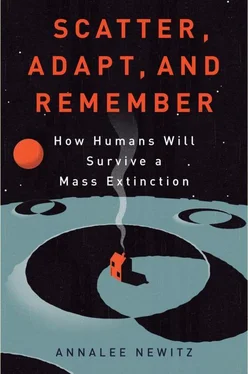


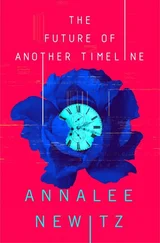



![Аннали Ньюиц - Автономность [litres]](/books/424681/annali-nyuic-avtonomnost-litres-thumb.webp)

